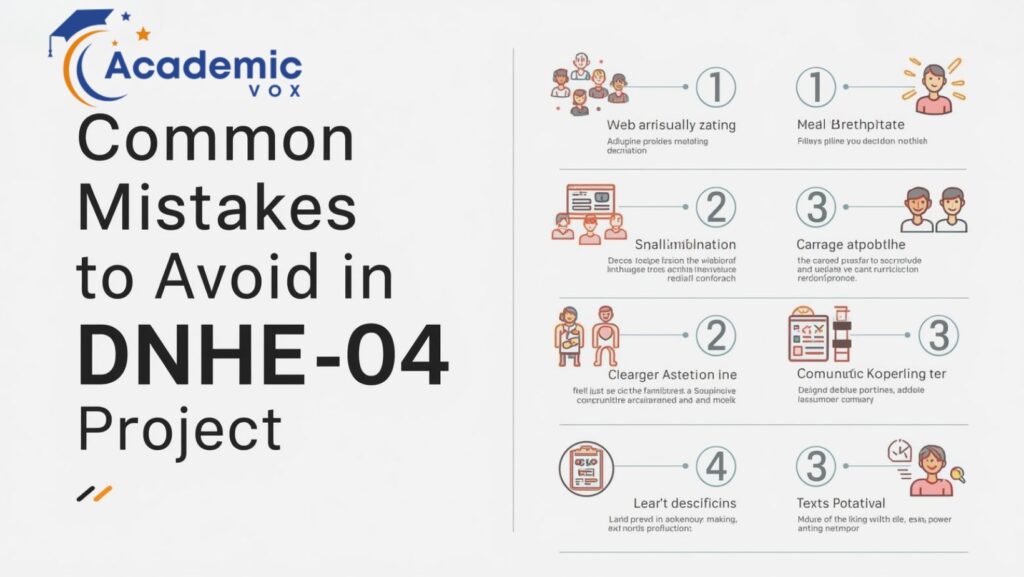Best Format for DNHE-04
The DNHE-04 course of IGNOU focuses on Nutrition and Health Education. The project report is an essential component that reflects your understanding and practical knowledge of the subject. A well-structured report not only ensures good grades but also demonstrates your ability to conduct research systematically.
Most students struggle with the proper format, citations, and presentation of findings. This guide provides a step-by-step approach to creating a DNHE-04 project report that is comprehensive, easy to understand, and academically sound.
Importance of a Proper Format in DNHE-04 Project
A clear and standardized format is crucial for the following reasons:
Ensures clarity and readability.
Highlights your research skills.
Helps in logical presentation of data.
Avoids common mistakes like missing references or poor structuring.
Aligns with IGNOU guidelines for evaluation.
By following the correct format, you can save time during writing and avoid last-minute confusion.
Components of DNHE-04 Project Report
The standard DNHE-04 project report should consist of the following sections:
1. Title Page
The title page is the first impression of your project. It should include:
Project Title
Student Name
Enrollment Number
Programme Code: DNHE
Course Code: DNHE-04
Study Centre Code
Submission Date
University Logo (optional)
Example:
Project Title: “Nutrition Awareness among School Children in Delhi”
Student Name: Aarti Sharma
Enrollment Number: 123456789
2. Declaration
Include a declaration statement confirming that the project is original and conducted by you.
Sample Declaration:
“I hereby declare that the project titled ‘Nutrition Awareness among School Children in Delhi’ submitted to IGNOU for the course DNHE-04 is my original work and has not been submitted elsewhere for any degree or diploma.”
3. Certificate from Supervisor
If required, include a certificate from your project guide or supervisor acknowledging your work. This adds credibility to your report.
Sample Certificate Format:
“This is to certify that the project report entitled ‘Nutrition Awareness among School Children in Delhi’ is a bonafide work carried out by Ms. Aarti Sharma under my guidance.”
4. Acknowledgment
A brief section to thank your supervisor, family, or institution for their support. Keep it concise, around 100–150 words.
5. Table of Contents
List all chapters, sections, and sub-sections with page numbers. Ensure headings match exactly with your report.
Sample Structure:
- Introduction
- Review of Literature
- Objectives of the Study
- Methodology
- Results and Discussion
- Conclusion
- References
8. Appendices
6. List of Tables and Figures
If your project includes charts, tables, or graphs, include a separate list for quick reference.
Chapter 1: Introduction
The introduction should provide background information and explain why the topic is relevant.
Include:
Problem Statement
Scope of the Study
Significance of Research
Limitations
Example:
“Nutrition plays a crucial role in the growth and development of children. Despite various awareness programs, malnutrition remains prevalent in urban schools. This study aims to assess the knowledge and practices regarding nutrition among school children in Delhi.”
Chapter 2: Review of Literature
In this section, summarize previous research studies and scholarly articles related to your topic.
Highlight gaps in research
Explain how your project contributes to existing knowledge
Cite studies using standard referencing styles (APA/MLA/IGNOU guidelines)
Chapter 3: Objectives of the Study
Clearly define your main objectives.
Example Objectives for DNHE-04 Project:
- To assess the nutrition awareness among school children.
- To identify common dietary practices.
3. To suggest strategies for improving nutritional habits.
Chapter 4: Methodology
Methodology explains how you conducted your research. Include the following:
Research Design: Descriptive, Survey, Case Study, etc.
Population and Sample Size: e.g., 100 students aged 10–14 years.
Sampling Technique: Random, Stratified, etc.
Data Collection Tools: Questionnaire, Interviews, Observation.
Data Analysis Method: Percentage, Mean, Graphical representation.
Example:
“A structured questionnaire was used to collect data from 100 students in two government schools of Delhi. The data were analyzed using descriptive statistics and presented in tables and graphs.”
Chapter 5: Results and Discussion
Present your findings clearly and systematically.
Use tables, charts, and graphs for visual representation.
Interpret the results in simple language.
Compare with previous studies if available.
Example:
“It was observed that 60% of students consume less than the recommended daily intake of fruits and vegetables. Awareness sessions improved knowledge but practical changes were minimal.”
Chapter 6: Conclusion and Recommendations
Summarize the main findings and suggest practical recommendations.
Sample Conclusion:
“The study highlights a significant gap between nutrition knowledge and actual dietary practices among school children. Regular awareness programs and parental involvement are crucial to improve dietary habits.”
Recommendations:
- Conduct monthly nutrition workshops in schools.
- Involve parents in nutrition education programs.
3. Include practical sessions for healthy meal preparation.
References
Cite all sources used in your project. Follow IGNOU guidelines for formatting.
Example:
- Gopalan, C., Rama Sastri, B. V., & Balasubramanian, S. C. (2014). Nutritive Value of Indian Foods. Hyderabad: NIN.
2. WHO. (2020). Child Nutrition Facts. Geneva: World Health Organization.
Appendices
Include additional materials like:
Questionnaire
Interview scripts
Graphs or charts not included in main chapters
Common Mistakes to Avoid in DNHE-04 Project Report
- Missing or incomplete title page and declaration
- Lack of proper referencing
- Ignoring the format guidelines
- Using vague objectives
- Presenting data without interpretation
6. Overlooking proofreading and editing
Tips for a Successful DNHE-04 Project
Start your project early to avoid last-minute stress
Follow the IGNOU prescribed format strictly
Maintain originality and avoid plagiarism
Use simple language for clarity
Include visual aids like tables and charts for better presentation
Conclusion
Preparing a DNHE-04 IGNOU project report requires careful planning, research, and proper formatting. By following this step-by-step guide, you can create a well-structured, comprehensive, and academically sound report that meets IGNOU standards.
Remember, a good project report is not just about completing the course—it’s about demonstrating your understanding of nutrition and health education in real-life scenarios.

